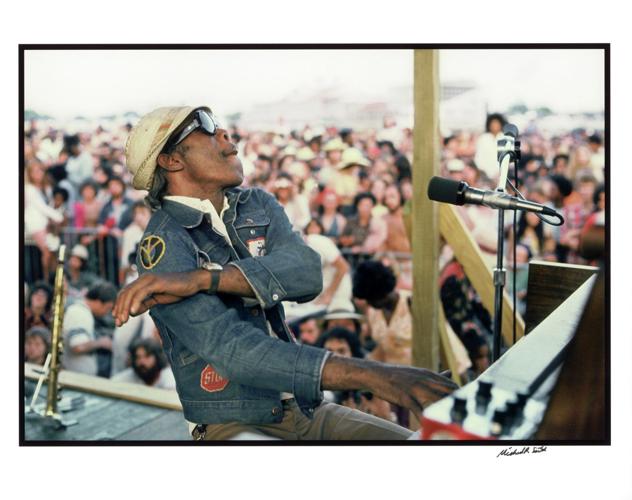In 1971, Jazz Fest founders George Wein, Quint Davis, and Allison Miner sat down at a bar in Uptown New Orleans, waiting to see a Mardi Gras Indian practice. A song came on the jukebox.
“Who's that?” Wein asked.
“Oh, that’s just a song that comes on at Carnival time,” was the answer.
“That’s somebody who should be at the festival. Go find him," said Wein.
The song was "Go To The Mardi Gras," and the musician was piano player Professor Longhair, born Henry Roeland "Roy" Byrd. He had a career from the late 1940s to the mid-1960s, and he was well-known to New Orleans R&B musicians. But his star had faded in recent years.
So, Davis and Miner went looking. They had to do a little hunting, because Professor Longhair had kept a low profile, to say the least. He wasn't recording, and he wasn't performing much. Longhair was hiding in plain sight, though, working as a janitor at a record store. Eventually, they tracked him down and persuaded him to come perform at the second year of the New Orleans Jazz & Heritage Festival.
The New Orleans Jazz and Heritage Festival has got satisfaction: The Rolling Stones are among the headliners for the 50th anniversary festival.
He agreed to perform for all three days, at the outdoor Heritage Fair.
When The Times-Picayune published a preview of Jazz Fest acts that year, it only included the words "a performance by Professor Longhair, described as a rhythm and blues great."
In other words, people really didn't know who he was.
And so, on April 22, 1971, Professor Longhair showed up in Congo Square in a dark short-sleeved shirt, with a couple of other musicians, including the guitarist Snooks Eaglin. They performed on the Blues Stage, which was actually just a small platform, enough room for a piano and a band. Most of the crowd had never seen Professor Longhair — and they loved him. The crowds started to gather, drawn away from all the other music going on at the festival.
The second and third days, "Fess" showed up in a suit, and the crowds kept growing. And he was suddenly a star. Everyone knew his name, his face and his music.

Bassist Reggie Scanlan, right, accompanies piano legend Professor Longhair at the 1977 New Orleans Jazz and Heritage Festival.
Professor Longhair was reborn. Allison Miner started to manage his career. He began recording again, and he performed around the world.
And he kept playing Jazz Fest, becoming one of the most beloved performers there in the 1970s. He played in 1971 through 1979 and was the traditional closer for the final day of the festival.
On Jan. 30, 1980, Professor Longhair passed away in his sleep, at 61.
After all the hype, heartburn, anticipation and disappointment, the 2019 New Orleans Jazz and Heritage Festival ended up in a very familiar pl…
Professor Longhair never left Jazz Fest, though. He has remained an essential icon of the festival, and his triumphant comeback symbolizes what Jazz Fest is about — embracing your heritage and celebrating it, not letting it slip away. His music will last forever, as an example of how great New Orleans music can be.
And his image still presides over the festival, from his position high atop the Acura Stage, smiling down year after year, as people gather to celebrate the heritage of this city, with all its rhythms and spontaneity and pure joy in music — just like Fess.
********
The Jazz Fest at 50 series, celebrating the half-century anniversary of the New Orleans Jazz & Heritage Festival presented by Shell, is a partnership between The New Orleans Advocate and WWOZ 90.7 FM.

















